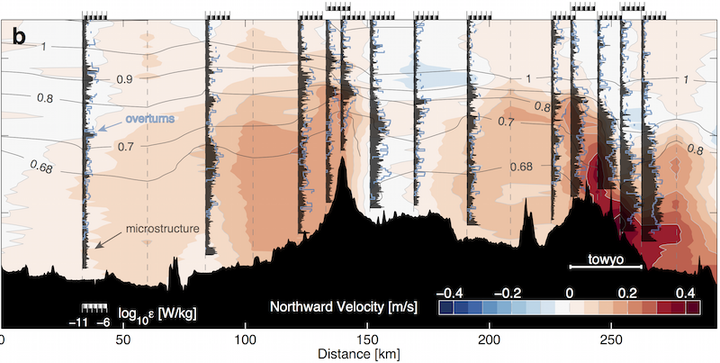
Abstract
We report the first direct turbulence observations in the Samoan Passage, a 40-km-wide notch in the South Pacific bathymetry through which flows most of the water supplying the North Pacific abyssal circulation. Observed turbulence is 1,000 to 10,000 times typical abyssal levels - strong enough to completely mix away the densest water entering the passage - confirming inferences from previous coarser temperature and salinity sections. Accompanying towed measurements of velocity and temperature with horizontal resolution of about 250$,$m indicate the dominant processes responsible for the turbulence. Specifically, the flow accelerates substantially at the primary sill within the passage, reaching speeds as great as 0.55$,$m/s. A strong hydraulic response is seen, with layers first rising to clear the sill, then plunging hundreds of meters downwards. Turbulence results from high shear at the interface above the densest fluid as it descends, and from hydraulic jumps that form downstream of the sill. In addition to the primary sill, other locations along the multiple interconnected channels through the Samoan Passage also have an effect on the mixing of the dense water. In fact, quite different hydraulic responses and turbulence levels are observed at seafloor features separated laterally by a few kilometers, indicating the need for accurate knowledge of small-scale bathymetry in parameterizing mixing in abyssal flows.